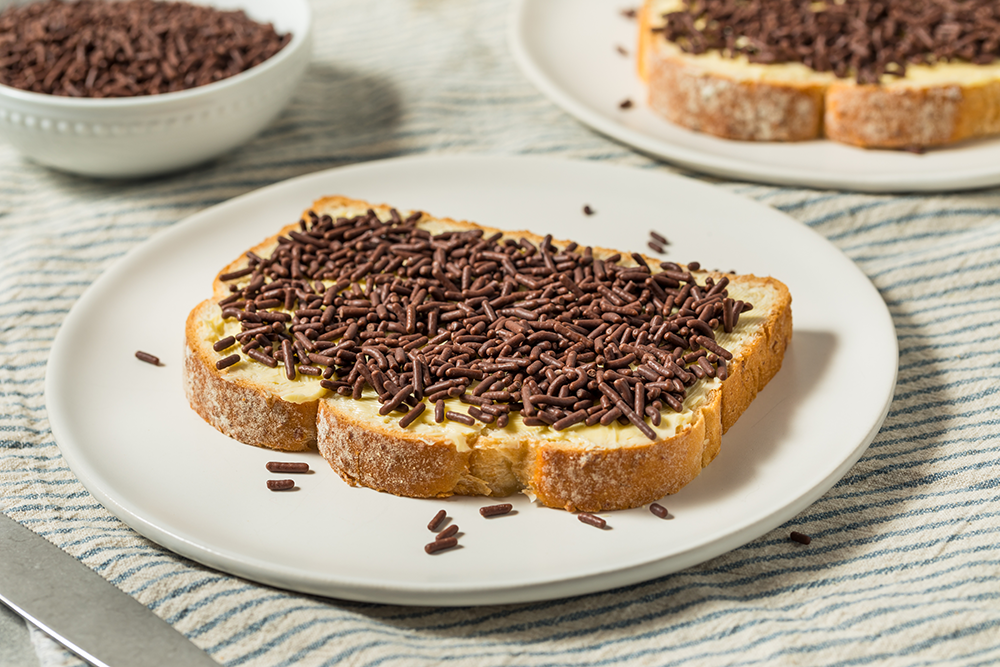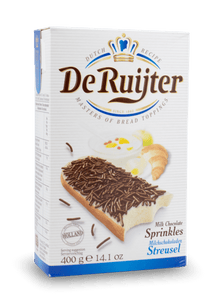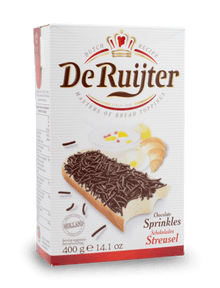History of Hagelslag
It's one of the most famous cultural-specific breakfasts in the world, but where did the Dutch chocolate sprinkles on bread come from?

It's one of the most famous cultural-specific breakfasts in the world, but where did the Dutch chocolate sprinkles on bread come from?
As with many amazing things, the invention of hagelslag came about somewhat as a fluke. Back in 1919, Amsterdam was in the middle of a nasty hailstorm. The director of the candy company Venco, B.E. Dieperink, was looking out his office window when inspiration struck. He came up with anise-flavoured small sprinkles and called them hagelslag, which translates to hailstorm in English. He patented the name, so no other companies could use it. Hagelslag became a huge success. The Dutch found that eating it on bread or beschuit (rusk) with butter was a great breakfast or lunch. Other companies wanted to begin producing hagelslag as well. De Ruijter came out with a fruit hagel in 1928, which they called vruchtenhagel.
In 1938, chocolate company Venz began mass producing chocolate hagel after a young boy wrote a letter requesting it. Venz could not call it hagelslag, so they had to use a variation like just hagel or chocoladehagel. Again, it was incredibly popular and quickly became a Dutch household staple.
Before long Dutch colonies and neighbouring countries were also on the hagel bandwagon. In Belgium they are commonly called muizenstrontjes (mouse droppings!). The Dutch eat 750,000 hagel sandwiches each day, which translates into more than 14 million kilograms of hagel being consumed each year.
Originally hagel was only in anise, fruit, or milk chocolate flavours. As competition grew, other companies introduced many new flavours, such as dark chocolate, forest fruit, extra dark chocolate, white chocolate, and more. A very Dutch tradition is to bring a box of either blue and white or pink and white hagel, referred to as muisjes, as a gift for new parents. There are also chocolate flakes, which look like shaved chocolate.
As tasty as a hagel sandwich or beschuit is, there are other uses as well. Often used as cake decorations, topping for ice cream or pudding, or sprinkled on top of cookies. Any way you eat them, they are always delicious.
Here in North America, chocolate on bread seems like a very strange thing. However, anyone who has ever tried it has quickly become a fan. It’s incredibly versatile as well. Try it with peanut butter, bananas, jam, or all three for a truly decadent treat!





3 comments
Thank you for this interesting article, i am making important researches about chocolate sprinkles
Love the story about The History of Hagelslag! Who knew where some of our Dutch customs come from. Ann
I remember beschuit met muisjes als kind, before the war with the birth of a baby, pink or blue for either girl or boy. Don’t know if that custom still exist. For the birth of Princess Margriet we all got them at school, we still had school then.